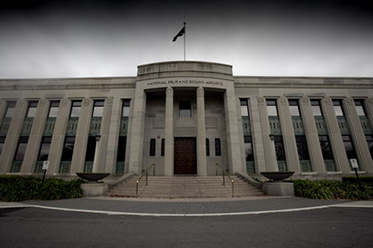 The National Film and Sound Archive of Australia (NFSA) has announced it will introduce a new business model and structure for the organisation, following a six-month review and consultation process.
The National Film and Sound Archive of Australia (NFSA) has announced it will introduce a new business model and structure for the organisation, following a six-month review and consultation process.
In a statement released on Friday 11 April by Mr Michael Loebenstein, NFSA CEO, he says: “To best fulfil our role as the ‘living archive’ of Australian film, broadcast and recorded sound, we need to adapt the way we do business to take better advantage of technology and of our relationships with partners in industry and the community.”
“More than any other collecting institution, transformational digital technology can be used to position us as the ‘archive of the future’. But this means we need to re-focus what we do and how we do it, to allow for re-investment into building capabilities and capacity to operate better in this online environment.”
“We will be doing many things differently in the future so we are even more effective, innovative and relevant. This means some things will not continue in the way we have traditionally done them. Others will be integrated with other functions, or re-focused to take advantage of collaborations and the continually enhancing ability to share and feature our collection using technology.”
“Contrary to a rumour which emerged yesterday, the NFSA will never become ‘a mere storage facility’. We will continue to be a place where people and communities can engage with Australia’s national audio-visual collection.”
“The changes we are making will be evident in our public programs and outreach activities in the ACT and across Australia. While existing programs such as the Arc Cinema program, exhibitions, and the touring film festivals will in many cases continue unchanged until the end of the winter season and into spring, they will be gradually replaced by new programs, with an increased focus on online delivery, and activities delivered in collaboration with partners in the cultural sector, the industry and communities.”
“The gradual roll-over into a new suite of engagement programs – including a clear commitment to sharing the NFSA Indigenous collection through a dedicated ‘Indigenous Connections’ program, will commence on 1 July and continue until the end of the calendar year, to honour existing commitments.”
“Under the new structure, we will be taking some hard decisions to reduce our staff numbers. We are working closely with staff to manage this through redeployment, natural attrition and voluntary redundancy. I am committed to making this change process transparent and respectful for all staff.”
In conclusion, Mr Loebenstein hopes this new structure will put us on a better footing to continue to collect and preserve, but most importantly, to share the wonderful collection with more people, in even more innovative and interesting ways, across Australia and overseas.
For more information, visit: www.nfsa.gov.au for details.
Image: Exterior of the National Film and Sound Archive of Australia in Canberra – by Dragi Markovic
